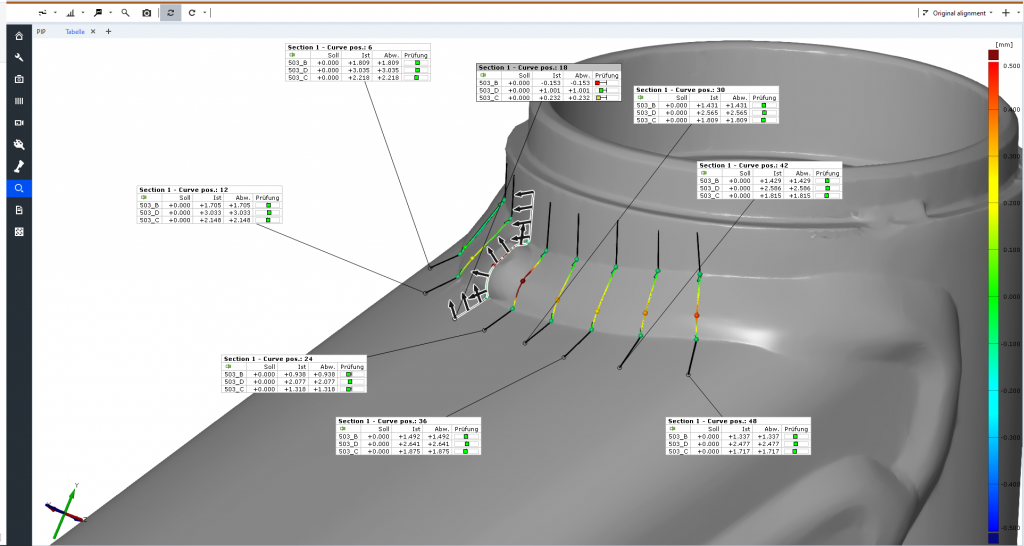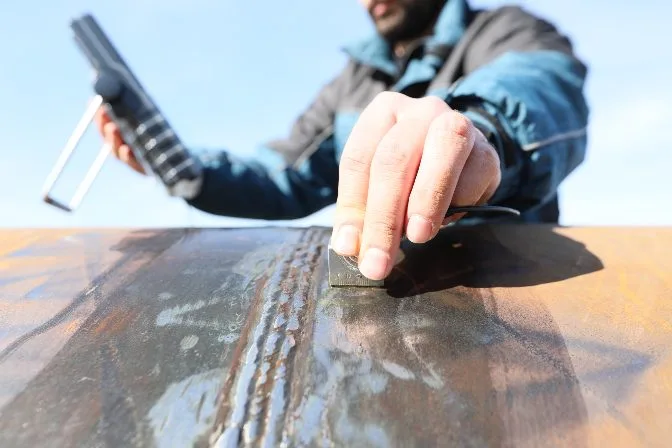Reputable Houston Welding Inspection for Conformity and Security Specifications
Reputable Houston Welding Inspection for Conformity and Security Specifications
Blog Article
A Comprehensive Guide to Comprehending Exactly How Welding Evaluation Works: Methods, Specifications, and Finest Practices for High Quality Assurance in Steel Fabrication
Comprehending the complexities of welding inspection is vital for keeping the honesty of steel manufacture. Carrying out best methods can significantly improve quality guarantee actions. The landscape of welding evaluation is not without its difficulties.
Value of Welding Assessment
Although welding is an essential process in numerous sectors, its honesty directly impacts the security and performance of structures and components. Efficient welding evaluation is important for determining issues that could jeopardize the top quality and sturdiness of welded joints. This procedure makes sure adherence to developed criteria and specifications, which are vital for preserving architectural honesty and operational dependability.
Welding inspection offers several functions, including validating that the welding process has actually been carried out properly, assessing the high quality of products used, and verifying that the ended up item satisfies governing and market standards (Houston Welding Inspection). With rigorous assessment, potential problems such as porosity, fractures, and insufficient fusion can be identified early, stopping pricey repair services and mitigating safety and security threats
Furthermore, constant welding assessments foster self-confidence amongst stakeholders, including engineers, clients, and regulative bodies, by demonstrating a dedication to top quality guarantee. The relevance of welding evaluation can not be overemphasized; it is indispensable not only for compliance with lawful requirements but also for improving the total performance of bonded structures. Ultimately, a robust welding examination program is an aggressive procedure that safeguards against failures, ensuring the longevity and dependability of welded components in their intended applications.
Usual Welding Examination Strategies

Aesthetic examination is the initial line of protection, allowing assessors to identify surface area defects such as splits, undercuts, or incomplete blend. Radiographic testing makes use of X-rays or gamma rays to expose inner flaws, making it excellent for complicated welds. Ultrasonic testing uses high-frequency acoustic waves to discover subsurface issues, giving accurate measurements of weld integrity.
Magnetic fragment screening works for ferromagnetic materials, highlighting surface and near-surface discontinuities when fragments are related to an electromagnetic field. On the other hand, color penetrant testing makes use of a liquid color to expose surface-breaking problems, guaranteeing that even the tiniest defects are found.
Each technique has its staminas and limitations, typically necessitating a combination of approaches for extensive assessment - Houston Welding Inspection. By using these evaluation strategies, high quality guarantee in metal fabrication is accomplished, guaranteeing that bonded structures fulfill security and performance standards
Market Requirements for Welding


The American Welding Culture (AWS) and the American National Requirement Institute (ANSI) are 2 prominent organizations that develop welding criteria. AWS D1.1, for instance, lays out the needs for welding steel frameworks, while AWS D1.2 concentrates on light weight aluminum. Internationally, the ISO 3834 standard addresses high quality requirements for blend welding, giving a framework appropriate throughout nationwide boundaries.

Finest Practices for Quality Control
Quality guarantee in welding is paramount to attaining risk-free and sturdy buildings. Carrying out finest methods guarantees that every weld fulfills the required criteria and requirements. Initially, establishing a detailed quality management system (QMS) customized to the particular welding project is necessary. This QMS ought to define treatments, functions, and duties to minimize threats and improve responsibility.
Routine training and qualification of welding workers are important for maintaining a knowledgeable workforce. Constant education on the most up to date welding techniques and innovations makes sure that inspectors and welders are experienced about current criteria and practices.
Additionally, conducting pre-weld assessments to evaluate materials and tools can stop issues prior to they occur. Houston Welding Inspection. Throughout the welding procedure, real-time tracking and paperwork of welding specifications aid determine incongruities right away. Post-weld examinations need to include comprehensive exams utilizing non-destructive testing (NDT) techniques to guarantee the honesty of the welds
Furthermore, keeping clear interaction among staff member promotes a culture of high quality. Normal audits and evaluations of the welding procedure assistance determine areas for improvement. By sticking to these finest methods, organizations can achieve optimal quality control, ultimately resulting in enhanced safety and performance in steel manufacture tasks.
Obstacles in Welding Assessment
Although welding assessment is important for making sure architectural honesty, it offers a selection of difficulties that can complicate the assessment procedure. One substantial difficulty is the variability in welding techniques and products utilized, which can impact the consistency of weld top quality. Various welders may use differing approaches, bring about disparities that inspectors requirement to identify and assess.
Another challenge includes the discovery of flaws. Non-destructive screening (NDT) techniques, such as ultrasonic and radiographic testing, can be intricate and require competent service technicians to analyze results properly. Incorrect positives or negatives can take place, potentially leading to costly rework or jeopardized security.
Furthermore, the existence of ecological variables, such as temperature and humidity, can influence the honesty of welds and go the efficiency of inspection methods. Examiners have to additionally browse the governing landscape, ensuring compliance with sector standards, which can differ by territory and application.
Verdict
To conclude, welding evaluation plays an essential duty in making certain the honesty and safety and security of steel fabrication. Utilizing a selection of assessment strategies, adhering to well established sector standards, and executing reliable top quality administration practices jointly enhance the dependability of bonded structures. In spite of the obstacles dealt with in the inspection process, a dedication to continual improvement and adherence to best techniques can substantially reinforce the quality control structure, fostering better self-confidence among stakeholders in click the welding market.
Efficient welding assessment is important for identifying flaws that could endanger the quality and sturdiness of bonded joints.In addition, consistent welding evaluations foster confidence amongst stakeholders, consisting of designers, clients, and regulatory bodies, by demonstrating a commitment to quality assurance.The American Welding Culture (AWS) and the American National Specification Institute (ANSI) are 2 popular companies that establish welding requirements. During the welding process, real-time monitoring and paperwork of welding parameters help determine incongruities promptly. Despite the obstacles encountered in the assessment procedure, a commitment to constant enhancement and adherence to ideal practices can dramatically boost the top quality assurance framework, cultivating greater confidence among stakeholders in the welding sector.
Report this page